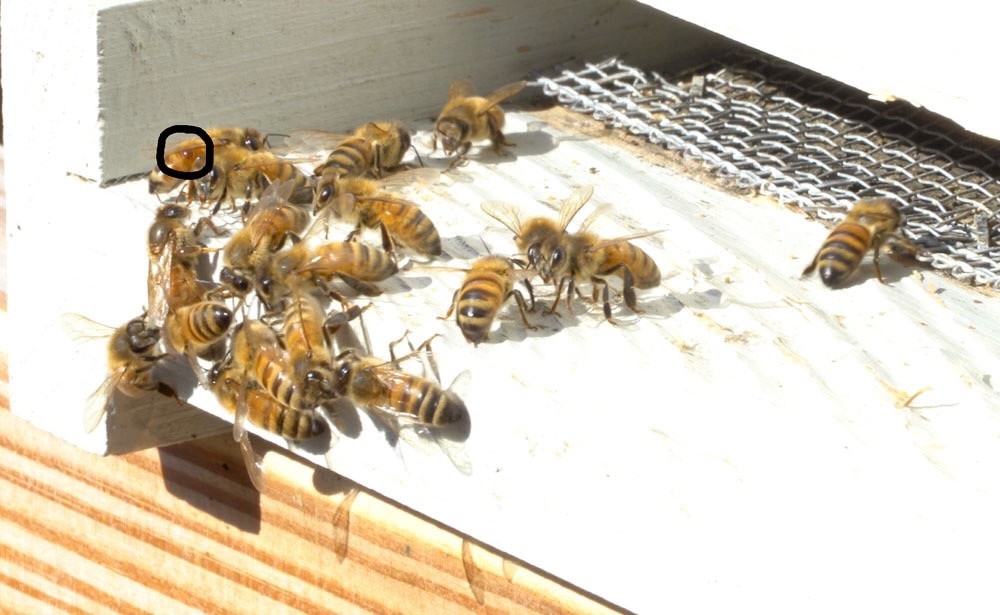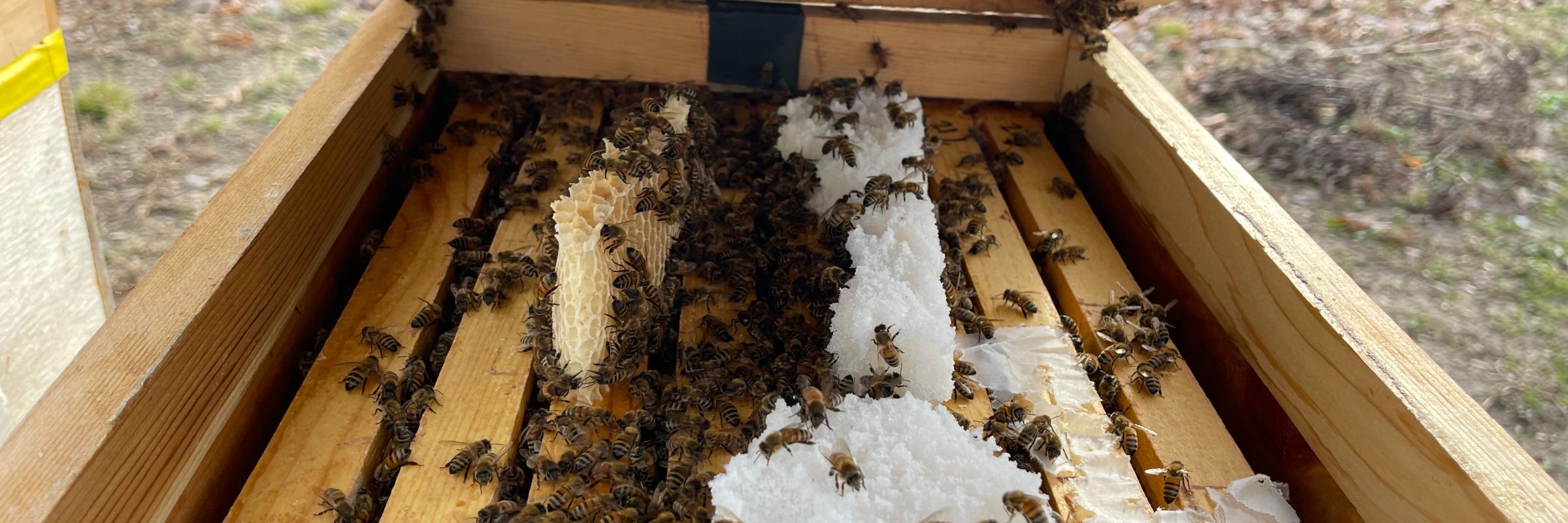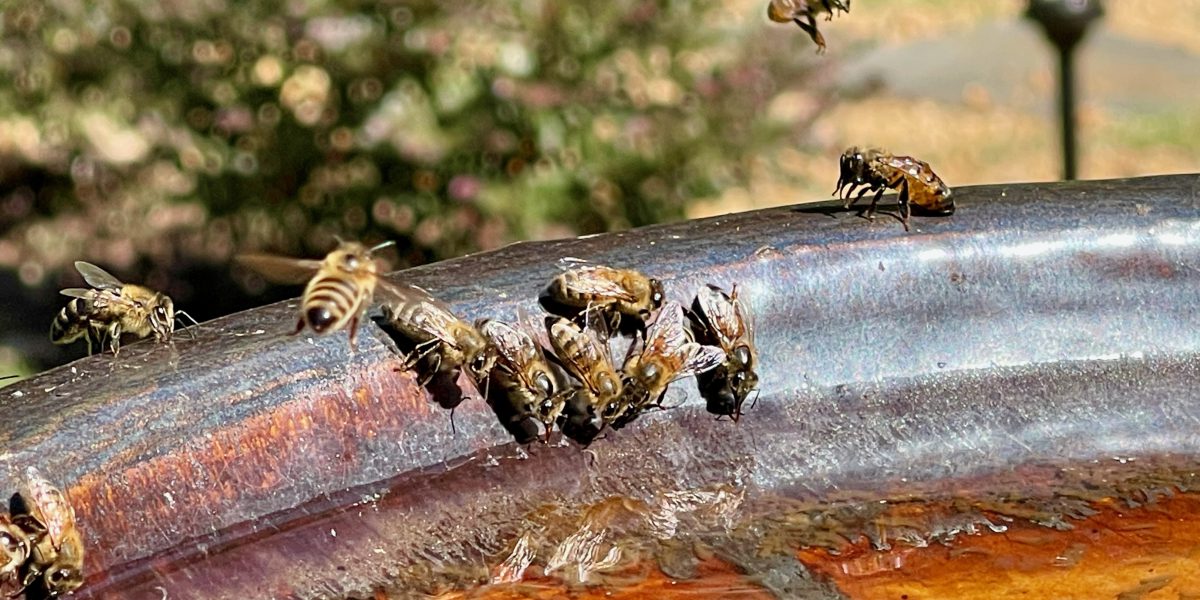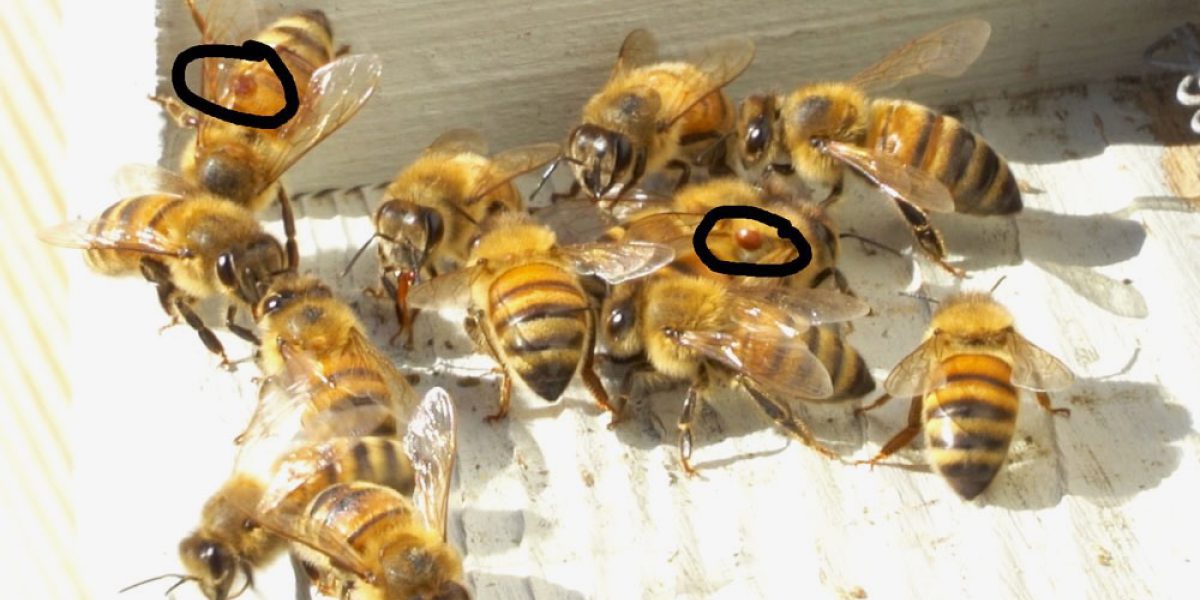article · Beekeeping · by The Backyard Farmer · Jan 25, 2023
I've been a beekeeper for four seasons now. I was amazed at how much there was to learn, and the challenges of learning it came in rapid fire succession. It is one of the fascinations of beekeeping. There is always something else to discover, another area to grow in, another problem to solve and keeping ahead of the needs of the bees can be daunting at times. The biggest challenge for the first year beekeeper is keeping their colonies alive to experience a second year.
There are a number of challenges for a colony of bees to survive. First, they have to have strong enough nurse bee numbers with a productive queen in order to produce enough workers and foragers to bring back and store enough food to survive the cold of winter. Second, they need to have a low mite load on the population so as not to succumb to the Varroa destructor and the various health issues that come with the presence of them. Third, they have to have enough food storage in the right location in the hive to sustain them should a sudden or long hard freeze hit them. Fourth, they must have adequate ventilation to avoid problems with moisture in the hive during the coldest days. Bees in winter usually die from either starvation (or food they cannot reach), high Varroa mite levels or they freeze to death from moisture related issues.
I had two colonies going into the fall of 2019. I felt they had enough to eat but I had not realized the fall Varroa treatment needed a follow up treatment in mid-December to knock down the mite levels. We'll cover Varroa Mites in another story, but suffice it say I felt like a total failure when in mid-January 2020 I went to visit the hive just in time to see the queen and last dozen or so bees desperately trying to remove the mites sucking the life out of their bodies.

One of the challenges of keeping bees is staying ahead of the needs of the colonies for population growth space, winter food stores, Varroa Destructor treatments, hive beetle strategies, ventilation, etc. Beekeeping is not for the faint of heart! It is work.
Randy Durham
I have begun to draw some confidence each year in my beekeeping skill growth based to some degree on my success rate with overwintering colonies. The first year I lost both colonies to varroa. The second year I overwintered five and three survived. The third year I overwintered five colonies and they all survived. I have six colonies this winter and so far they all seem to be in good shape.
So how do I prep my colonies for winter in terms of food?
First, I want to leave several frames to a full super of honey when I harvest end of June to first of July. I only harvest once a season so this gives them the rest of the year to build up again. They usually end up using some stored resources during the dearth period of summer, so I need a strategy for feeding them going into fall.
Second, I begin feeding them 2:1 sugar water if their stores are not heavy enough towards the middle to end of September. You don't want to feed 1:1 syrup at this time of year because it stimulates brood production. You want the queen to begin slowing down at this time of year and to focus on "winter bees". With a ratio of 2 parts sugar to 1 part water it will be heavy enough they they will want to immediately store it in cells. And I want them to have enough time to move the syrup into the frames and cap it before it gets too cool to do so.
It is important to periodically check the weight of your hives as you're monitoring their winter stores buildup. I use 8-frame equipment and have decided that I want to focus on (1) deep for brood production and (1) medium super for honey storage for each colony going into winter. An 8-frame medium honey super full of honey would weigh between 45-50 pounds. In our somewhat mild winters in central North Carolina that should be enough for a colony to survive. If it is an unusually warm winter however, there will be more foraging activity requiring more energy, which translates into food they will burn through if they are not bringing much in to compensate.
If their stores waver I do not feed them anymore sugar water after mid-November at the latest, but rather rely on either "sugar bricks" or "winter patties". The sugar bricks are economical but sometimes a pain to get the consistency just right.
It is important NOT to feed them "pollen patties" in the winter. The presence of pollen will stimulate brood production and you don't want your colonies cranking up the brood production too soon. That would result in more mouths to feed and more energy expended to keep the brood from chilling on cold days.
I do like to use AP23 Winter patties from Dadant or an equivalent from another source. The "winter patties" contain only a small amount of pollen but are primarily a source of carbohydrates. They contain sugar, AP23 and Honey-B-Healthy and can be used instead of candy boards. I like to have a box on hand in case we have a hard freeze and their stores run low. I put a feeding shim on each hive on a nice day prior to a cold front and lay a patty or half-patty (depending on how long the cold spell is projected to last) on top and close it up.
The combination of natural stores, 2:1 sugar supplement to build up hive weights prior to cold weather, sugar bricks and/or winter patties gives my colonies a good shot at making it through several weeks of cold and rainy weather and the foundation for a strong build up in February to March prior to the spring flow.
Of course at the same time we are monitoring their food resources we've got to manage the varroa mite issue as well if they are to make it to spring. I'll share my approach to mite treatments in a future post. I hope you've found this helpful.



